Related Research Articles
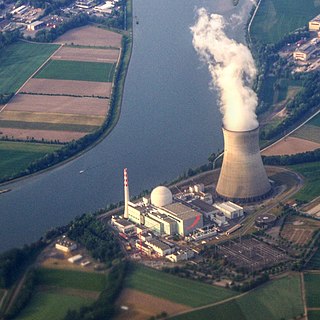
Nuclear power is the use of nuclear reactions to produce electricity. Nuclear power can be obtained from nuclear fission, nuclear decay and nuclear fusion reactions. Presently, the vast majority of electricity from nuclear power is produced by nuclear fission of uranium and plutonium in nuclear power plants. Nuclear decay processes are used in niche applications such as radioisotope thermoelectric generators in some space probes such as Voyager 2. Generating electricity from fusion power remains the focus of international research.

Uranium is a chemical element with symbol U and atomic number 92. It is a silvery-grey metal in the actinide series of the periodic table. A uranium atom has 92 protons and 92 electrons, of which 6 are valence electrons. Uranium is weakly radioactive because all isotopes of uranium are unstable; the half-lives of its naturally occurring isotopes range between 159,200 years and 4.5 billion years. The most common isotopes in natural uranium are uranium-238 and uranium-235. Uranium has the highest atomic weight of the primordially occurring elements. Its density is about 70% higher than that of lead, and slightly lower than that of gold or tungsten. It occurs naturally in low concentrations of a few parts per million in soil, rock and water, and is commercially extracted from uranium-bearing minerals such as uraninite.

Depleted uranium is uranium with a lower content of the fissile isotope 235
U
than natural uranium. Natural uranium contains about 0.72% 235
U
, while the DU used by the U.S. Department of Defense contains 0.3% 235
U
or less. The less radioactive and non-fissile 238
U
constitutes the main component of depleted uranium. Uses of DU take advantage of its very high density of 19.1 grams per cubic centimetre (0.69 lb/cu in).

A nuclear and radiation accident is defined by the International Atomic Energy Agency (IAEA) as "an event that has led to significant consequences to people, the environment or the facility. Examples include lethal effects to individuals, large radioactivity release to the environment, reactor core melt." The prime example of a "major nuclear accident" is one in which a reactor core is damaged and significant amounts of radioactive isotopes are released, such as in the Chernobyl disaster in 1986 and Fukushima nuclear disaster in 2011.

Friedrich Wilhelm Strassmann was a German chemist who, with Otto Hahn in December 1938, identified the element barium as a product of the bombardment of uranium with neutrons. Their observation was the key piece of evidence necessary to identify the previously unknown phenomenon of nuclear fission, as was subsequently recognized and published by Lise Meitner and Otto Frisch.

South Korea has the raw materials and equipment to produce a nuclear weapon but has not opted to make one. In August 2004, South Korea revealed the extent of its highly secretive and sensitive nuclear research programs to the International Atomic Energy Agency (IAEA), including some experiments which were conducted without the obligatory reporting to the IAEA called for by South Korea's safeguards agreement. The failure to report was reported by the IAEA Secretariat to the IAEA Board of Governors; however, the IAEA Board of Governors decided to not make a formal finding of noncompliance. However, South Korea has continued on a stated policy of non-proliferation of nuclear weapons and has adopted a policy to maintain a nuclear-free Korean Peninsula.
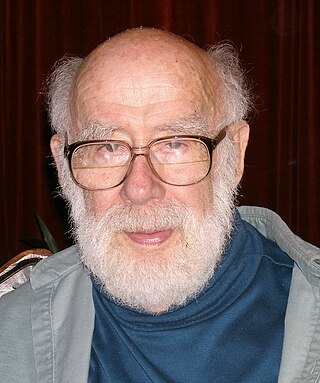
John William Gofman was an American scientist and advocate. He was Professor Emeritus of Molecular and Cell Biology at the University of California at Berkeley.

The Chernobyl disaster was a nuclear accident that occurred on 26 April 1986 at the No. 4 reactor in the Chernobyl Nuclear Power Plant, near the city of Pripyat in the north of the Ukrainian SSR in the Soviet Union. It is one of only two nuclear energy accidents rated at seven—the maximum severity—on the International Nuclear Event Scale, the other being the 2011 Fukushima nuclear disaster in Japan. The initial emergency response, together with later decontamination of the environment, involved more than 500,000 personnel and cost an estimated 18 billion roubles—roughly US$68 billion in 2019, adjusted for inflation.
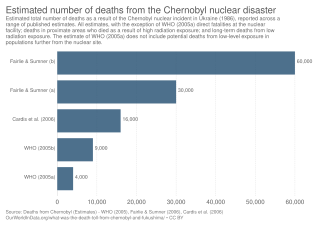
The 1986 Chernobyl disaster triggered the release of radioactive contamination into the atmosphere in the form of both particulate and gaseous radioisotopes. As of 2022, it was the world's largest known release of radioactivity into the environment.
This article compares the radioactivity release and decay from the Chernobyl disaster with various other events which involved a release of uncontrolled radioactivity.
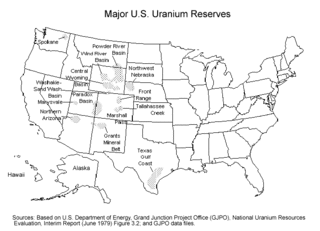
Uranium mining in the United States produced 173,875 pounds (78.9 tonnes) of U3O8 in 2019, 88% lower than the 2018 production of 1,447,945 pounds (656.8 tonnes) of U3O8 and the lowest US annual production since 1948. The 2019 production represents 0.3% of the anticipated uranium fuel requirements of the US's nuclear power reactors for the year.
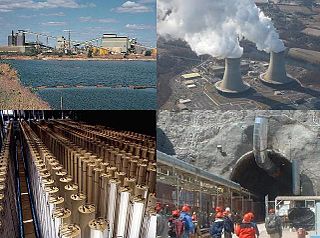
Nuclear power has various environmental impacts, including the construction and operation of the plant, the nuclear fuel cycle, and the effects of nuclear accidents. Nuclear power plants do not burn fossil fuels and so do not directly emit carbon dioxide. The carbon dioxide emitted during mining, enrichment, fabrication and transport of fuel is small when compared with the carbon dioxide emitted by fossil fuels of similar energy yield, however, these plants still produce other environmentally damaging wastes.

Christopher Busby is a British scientist primarily studying the health effects of internal ionising radiation. Busby is a director of Green Audit Limited, a private company, and scientific advisor to the Low Level Radiation Campaign (LLRC).

The Kyshtym disaster, sometimes referred to as the Mayak disaster or Ozyorsk disaster in newer sources, was a radioactive contamination accident that occurred on 29 September 1957 at Mayak, a plutonium production site for nuclear weapons and nuclear fuel reprocessing plant located in the closed city of Chelyabinsk-40 in Chelyabinsk Oblast, Russian SFSR, Soviet Union.

Corium, also called fuel-containing material (FCM) or lava-like fuel-containing material (LFCM), is a material that is created in a nuclear reactor core during a nuclear meltdown accident. Resembling lava in consistency, it consists of a mixture of nuclear fuel, fission products, control rods, structural materials from the affected parts of the reactor, products of their chemical reaction with air, water and steam, and, in the event that the reactor vessel is breached, molten concrete from the floor of the reactor room.
From 1946 through 1993, thirteen countries used ocean disposal or ocean dumping as a method to dispose of nuclear/radioactive waste with an approximation of 200,000 tons sourcing mainly from the medical, research and nuclear industry.

S.T.A.L.K.E.R. is a first-person-shooter survival horror video game series developed by GSC Game World. The series is set in an alternate version of the present-day Chernobyl Exclusion Zone in Ukraine, where, according to the series' backstory, a mysterious second Chernobyl disaster took place in 2006. As a result, the physical, chemical, and biological processes in the area were altered, spawning numerous nature-defying anomalies, artifacts, and mutants. The player takes the role of a "stalker" - a name given to trespassers and adventurers who have come to explore the exclusion zone and its strange phenomena.

Nuclear labor issues exist within the international nuclear power industry and the nuclear weapons production sector worldwide, impacting upon the lives and health of laborers, itinerant workers and their families.

The Elephant's Foot is the nickname given to a large mass of corium and other materials formed underneath the Chernobyl Nuclear Power Plant, near Pripyat, Ukraine, during the Chernobyl disaster of April 1986, notable for its extreme radioactivity. Discovered in December of that year, it is located in a maintenance corridor near the remains of Reactor No. 4. It is still an extremely radioactive object, though the danger has decreased over time due to the decay of its radioactive components.
References
- ↑ United States. Joint Publications Research Service; United States. Foreign Broadcast Information Service (1991). USSR report: Chemistry. Joint Publications Research Service. Retrieved 20 July 2012.
- ↑ Richard Francis Mould (1 May 2000). Chernobyl Record: The Definitive History of the Chernobyl Catastrophe. CRC Press. pp. 128–. ISBN 978-0-7503-0670-6 . Retrieved 20 July 2012.
- ↑ Valeriy Soyfer "Chernobylite: Technogenic Mineral", Khimiya i Zhizn', No 11, Nov. 1990, p. 12, in Science & Technology USSR: Chemistry. JPRS Report. 27 March 1991. p. 29.